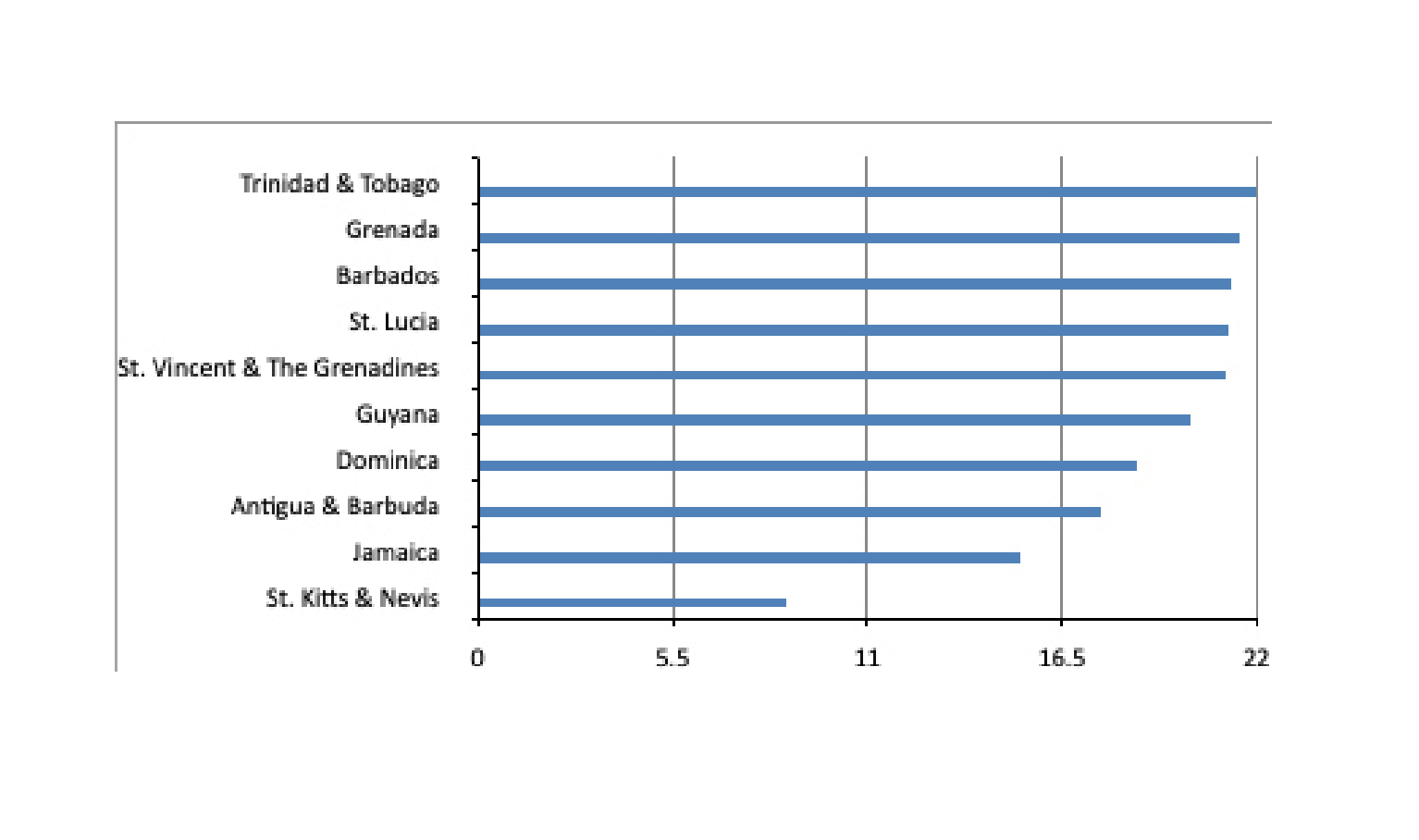Disclaimer: The views and opinions expressed by the author(s) do not represent the official position of Barbados TODAY.
By Dr. Colin V. Alert
In 2014, a rock group called Kansas had an international hit with a song called Dust in the Wind. Among the lines in this masterpiece is one that says, “Dust in the wind, All we are is dust in the wind”.
According to the CDC, the USA-based Centre for Disease Control, particulate matter (PM), also called particulate pollution, is made up of tiny particles of solids or liquids in the air. These particles may include dust, dirt, soot, and smoke. Particulate matter is one of the primary contributors to air pollution. When there are a lot of particles in the air, particle pollution becomes visible: a well-known example includes the ash following the volcanic eruption in neighbouring St. Vincent in April 2021, when across Barbados midday looked like midnight.
Another common example is the influx of dust from the Sahara desert. Precipitation also affects visibility, as evidenced by smog. This phenomenon occurs when air pollution interacts with tiny water droplets. Clear sunny days, however, do not necessarily signify an absence of air pollution, as particulate matter is invisible to the naked eye.
Breathing in particulate matter can be dangerous to your health, with both short-term and long-term consequences. Particulate matter is normally separated into three categories: PM 1, PM 2.5 and PM 10. The smallest particle is the PM 1, with a diameter of less than or equal to 1 micron. For comparison, a human hair is 60-80 microns thick. These particles enter the body through the nose and mouth, and, after getting into the deeper portions of the lungs, can get into the bloodstream. These ultrafine particles have the greatest potential for destruction of human tissues, because of their ease of penetration into the body. PM 2.5 particles are 2.5 microns or less. Like the PM1 particles, the PM 2.5 particle can enter the bloodstream and travel to organs such as the brain and kidneys, causing (or contributing to the development of) conditions such as dementia and chronic kidney diseases.
Face masks equivalent to K95 or KN 95 can help provide (some) protection against PM 2.5 particles (and, contrary to the false information spread on some ‘fake news’ circuits) can provide partial protection against COVID-19 aerosols).
Indoor sources of PM 2.5 particles can include pet dander, micro-organisms like bacteria and viruses, molds, chemicals from cleaning products, building materials, fuel burning equipment such as stoves, mosquito coils, incense and candles, upholstered goods like thick carpets, cushions and blinds, and household activities like cooking and sweeping.
Coarse (bigger particles), called PM10, are 10 microns or less in diameter, and can irritate your eyes, nose and throat. If inhaled, they generally cause significant irritation in the upper respiratory tract, and they can be expelled by coughing or sneezing. These reflexes are spontaneous and protective, preventing further penetration into the lower respiratory tract. Those that are not expelled get into the lung, where significant damage can occur.
Other common sources of particle pollutions are construction sites, unpaved roads or grassless school yards. Fires may include indiscriminate burning of refuge and bush or forest fires. Sulfur dioxide and nitrogen oxides, which are pollutants emitted from industrial plants and automobiles, react with other compounds in the atmosphere to form dangerous chemicals, another contributor to PM pollution. Some of these chemicals are carcinogenic (cancer causing) agents.
Particle pollution can affect everyone. People who are most likely to experience health problems from particle pollution include people with pre-existing heart or lung diseases, babies and children, and older adults.
In people with heart disease, for example, particle pollution may aggravate the underlying disease, and can trigger serious acute illness like heart attacks. Over the last decade in Barbados, there was an average of a heart attack a day, but data indicating how many heart attacks are due to air pollution needs to be researched and documented.
We have focused on, and have some data on, the traditional risk factors for heart disease like obesity, diabetes mellitus, hypertension and the dyslipidemias, mainly high cholesterol. Most of these require each individual to be aware of, and to work closely with, their family physicians to adopt appropriate lifestyle options. Additional treatment includes the use of pharmacotherapy, and to have an ongoing regime for monitoring the disease process over time.
The recognition that particulate pollution may be a contributor to heart disease is yet another hurdle in efforts to reduce suffering and deaths. Most people are unaware of particulate pollution in the first place, and most are completely unaware of potentially dangerous atmospheric pollution in our countries.

Table 1: Particulate Matter (PM 2.5) air pollution concentration average daily concentrations 2019. Latin America & the Caribbean: Published by Ian Tiseo, Mar 21, 2022.
By reducing air pollution levels, countries can reduce the burden of disease, including long and short-term illnesses. The World Health Organization (WHO) updated guidelines state that annual average concentrations of PM 2.5 should not exceed 5 µg/m 3, while 24-hour average exposures should not exceed 15 µg/m 3 more than 3 – 4 days per year. Table 1 shows that our levels still exceed the WHO minimum standard.
Many of the big cities of the world have much higher levels of particle pollution than we do, but they also have higher rates of chronic lung diseases like asthma and COPD, and they have higher rates of cardiovascular diseases like heart attacks, heart failure and strokes. They also have higher rates of many cancers, including cancers of the nose, mouth, and lungs, and in areas of the body which come into direct contact with the particulate matter. Cancers of other organs like the liver and the pancreas are also more prevalent in places with high particle pollution levels.
But while many cardiovascular risk factors can be significantly influenced and modified by personal choices and action, a risk factor like particulate pollution requires community action. In an era where the effects of climate change on the health of homo sapiens is increasingly being recognized, our populations need to be informed of the threats and possible solutions.
Coming out of the COVID-19 pandemic, which has killed over 6.5M persons worldwide in two years, and with climate change conditions projected to ‘facilitate’ the emergence of more frequent pandemics, survival may become increasingly challenging. In the last 40 years or so Caribbean countries have been fighting losing battles when faced with the chronic non-communicable diseases; if the experience of COVID-19 is anything to go by, our countries are not in positions of strength to tackle any more major health challenges. Atmospheric pollution, as one component of climate change, if left unchanged, is likely to increase the suffering and deaths of Caribbean peoples.
Particulate pollution is certainly not the only problem that will accompany climate change. Do we have it within ourselves to adequately prepare ourselves for this upcoming threat? Charity, it was once rumoured, begins at home. Can we afford to wait for the international community, at major conferences such as the just concluded COP 27, to offer us financial resources to deal with the climate change challenges happening now (while we wait for the financial resources to deal with the reparations that arise out of slavery centuries ago)? We cannot “kick climate change down the road”. If we do not act now, we may soon all be “dust in the wind”.
Dr. Colin V. Alert, MB BS, DM. is a family physician and associate UWI family medicine lecturer.





